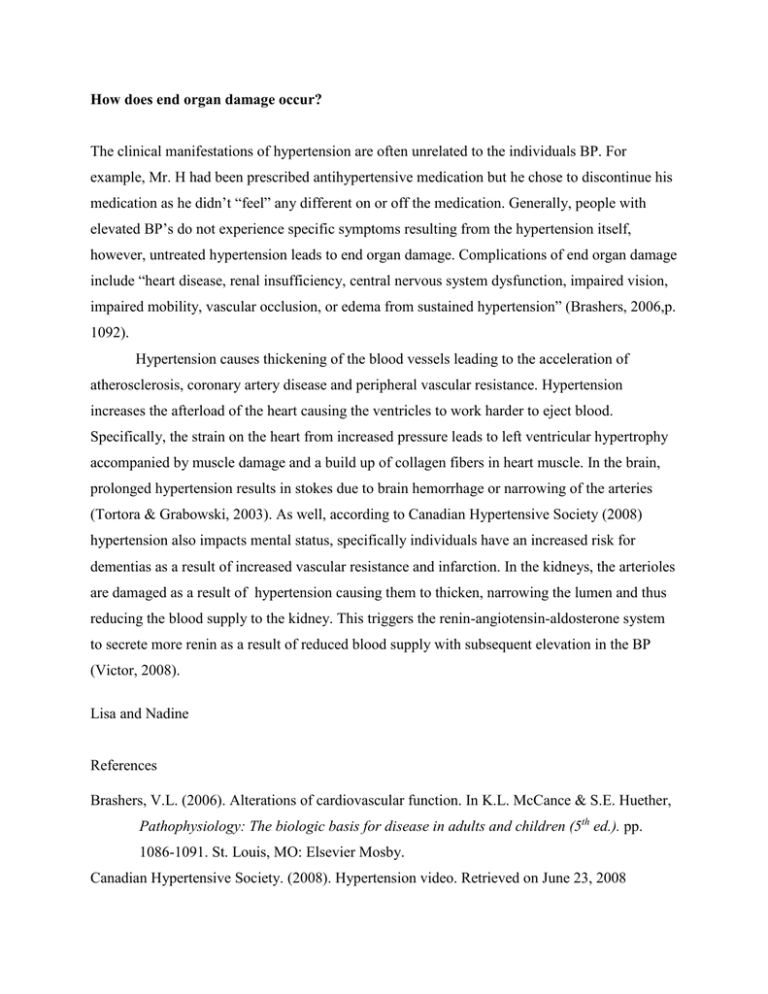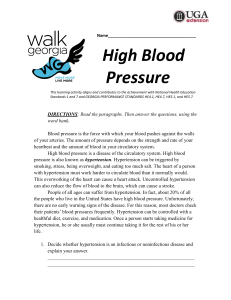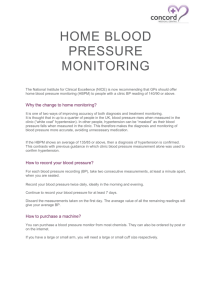How does end organ damage occur?
advertisement

How does end organ damage occur? The clinical manifestations of hypertension are often unrelated to the individuals BP. For example, Mr. H had been prescribed antihypertensive medication but he chose to discontinue his medication as he didn’t “feel” any different on or off the medication. Generally, people with elevated BP’s do not experience specific symptoms resulting from the hypertension itself, however, untreated hypertension leads to end organ damage. Complications of end organ damage include “heart disease, renal insufficiency, central nervous system dysfunction, impaired vision, impaired mobility, vascular occlusion, or edema from sustained hypertension” (Brashers, 2006,p. 1092). Hypertension causes thickening of the blood vessels leading to the acceleration of atherosclerosis, coronary artery disease and peripheral vascular resistance. Hypertension increases the afterload of the heart causing the ventricles to work harder to eject blood. Specifically, the strain on the heart from increased pressure leads to left ventricular hypertrophy accompanied by muscle damage and a build up of collagen fibers in heart muscle. In the brain, prolonged hypertension results in stokes due to brain hemorrhage or narrowing of the arteries (Tortora & Grabowski, 2003). As well, according to Canadian Hypertensive Society (2008) hypertension also impacts mental status, specifically individuals have an increased risk for dementias as a result of increased vascular resistance and infarction. In the kidneys, the arterioles are damaged as a result of hypertension causing them to thicken, narrowing the lumen and thus reducing the blood supply to the kidney. This triggers the renin-angiotensin-aldosterone system to secrete more renin as a result of reduced blood supply with subsequent elevation in the BP (Victor, 2008). Lisa and Nadine References Brashers, V.L. (2006). Alterations of cardiovascular function. In K.L. McCance & S.E. Huether, Pathophysiology: The biologic basis for disease in adults and children (5th ed.). pp. 1086-1091. St. Louis, MO: Elsevier Mosby. Canadian Hypertensive Society. (2008). Hypertension video. Retrieved on June 23, 2008 from www.hypertension.ca. Tortora, G.J., & Grabowski, S.R. (2003). Principles of anatomy and physiology (10th ed.). New York, NY: John Wiley & Sons. Victor, R.G. (2008). Arterial hypertension. In L. Goldman & D. Ausiello, Cecil medicine (23rd ed.). Philadelphia, PA: Saunders Elsevier.





